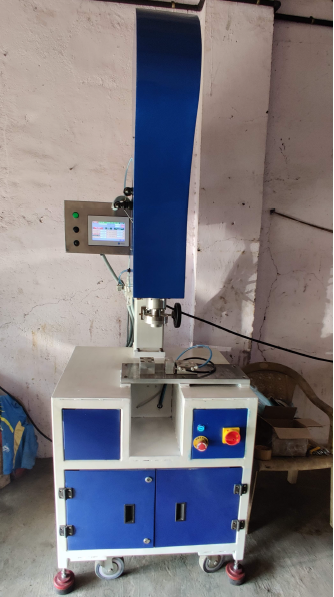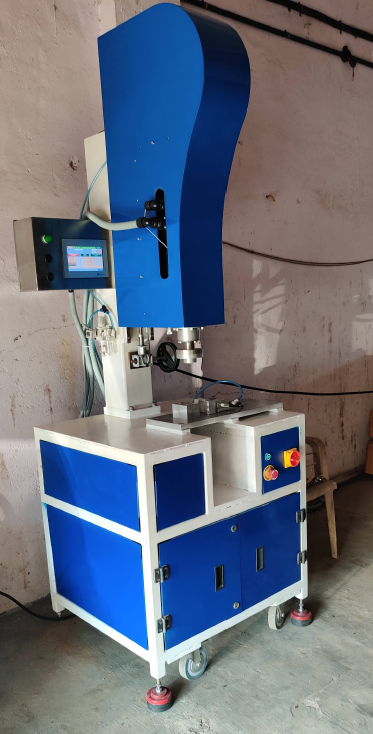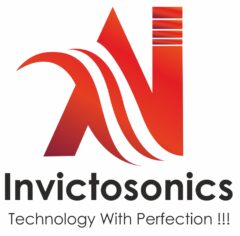Spin Welding Machine
The process of spin welding consists of generating heat by rotational friction to weld thermoplastic parts with circular joints. The spin welding machine applies force axially while rotating one part against its stationary mate. The resulting friction generates heat that melts the parts at the interface. Once rotation stops, the material cools and solidifies, forming a welded assembly. For cases where the parts must be oriented in a particular manner with respect to each other, the welder stops the rotation at a precise angular orientation.
Material Considerations
Materials suitable for spin welding are generally the same as those that can be joined by other friction welding processes, such as vibration welding. Semicrystalline thermoplastics are more readily joined using spin welding than ultrasonics. Using compatible polymers, spin welding is capable of making reliable hermetic seals.
Joining of dissimilar polymers is possible using the spin weld process, although it generally produces lower strength weld joints. By designing the weld joint with an undercut, the polymer with the lower melting temperature will flow into the undercut, creating a mechanical union.
Material filler and surface contaminants (e.g. mold release agent) are two factors that will affect consistency and weld repeatability. Spin welding is more tolerant of contaminants than ultrasonic welding. Spin welding is also less affected by hygroscopic polymers, although they may still require special handling for critical applications.
Joint Design Considerations
One of the keys to successfully employing spin welding is the proper design of the weld joint, which is the geometry of the parts to be welded in the areas where material is melted. Basic joint design requirements and recommendations are listed below. It is best to consider these aspects in the early phase of part design.
Part joint must be circular (other part geometry may be non-circular).
Joint type should be selected to meet welded assembly requirements.
Joint design should allow for adequate collapse (i.e., melting) distance.
The part to be mounted in the spinning tool on the machine should have driving features so that torque can be transmitted from the tool to the part.
Control Parameters
The primary process control parameters in spin welding are: linear speed at the weld joint (based on spin RPM), press (axial) speed, weld depth, hold depth, and hold time. The settings for these, as well as other parameters, depend on part size, materials, joint design, and other factors. Dukane spin welders provide an intuitive user interface for setting all process control parameters.
Advantages
Advantages of the spin welding process include high quality permanent joints, hermetic seals, lower equipment costs compared to other processes, ease of assembly, energy efficient operation, immediate handling, entrapment of other parts, far-field welding capability and elimination of additional materials, such as adhesives.


